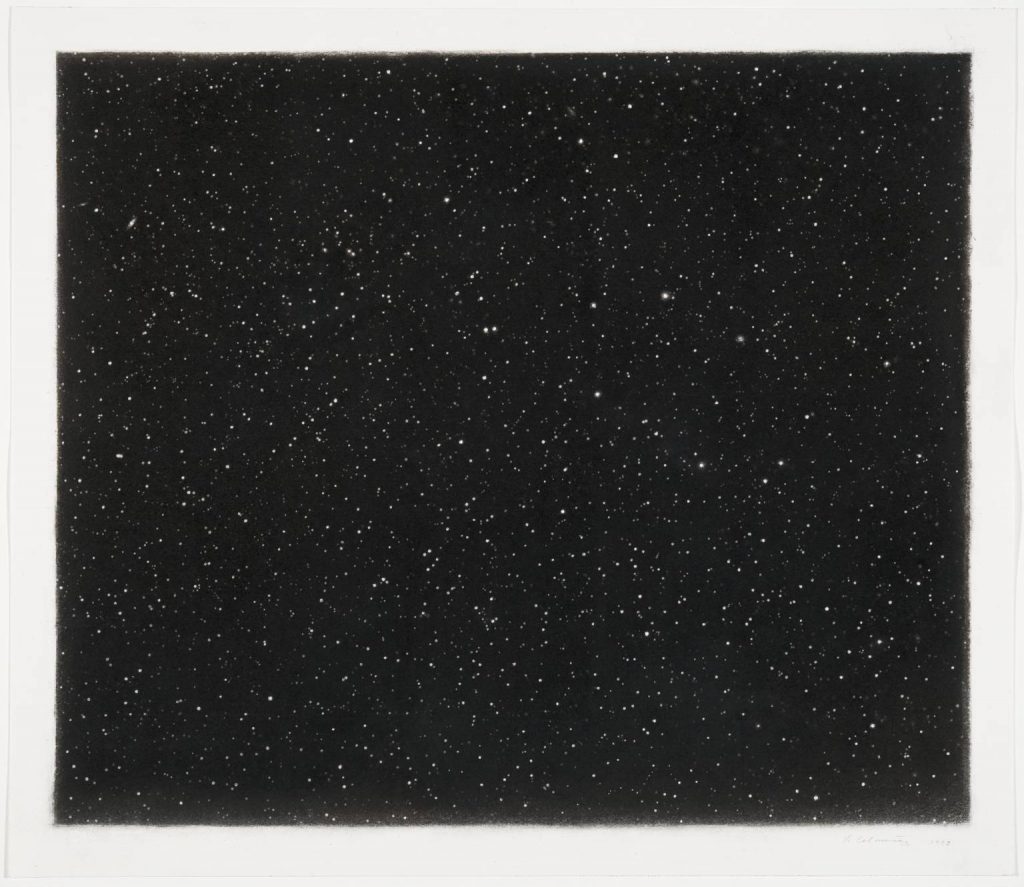Vija Celmins is a Lativian-American who has been engaged in art since she was a child. She has a career spanning over fifty years in Los Angeles and now New York, and continues to create amazing works of art to this day. She is featured in Manhattan at the Met Breuer. Starting her career in the 1960s, she drew and painted everything from her stove burner and lamps to the waves from her beach walks.

https://news.artnet.com/exhibitions/vija-celmins-met-breur-1684402
She uses graphite pencil in life-like yet surreal ways, observing nature or rendering images from magazines and newspapers.

https://ago.ca/agoinsider/icymi-vija-celmins-her-own-words
Vija, in an interview, commented on her works made from using real life and newspaper clippings, saying about her art:
“This is an invented thing. You know that it’s not like a copy of nature, or copy of photograph. It’s an invented thing you have in front of you” (Vija, Art21 32:49).
She has been inspired to make art concerning space in much of her work after the 1960s space race and the moon landing in 1969.

Vija also uses paints and sculpture to bring her art alive. In her work “To Fix The Image In Memory”, she made bronze casts of eleven different rocks and than painted the casts to resemble the real rocks as much as possible. In the work, the rocks and casts are placed together and the viewer is challenged to tell the real life and painted ones apart. Vija saw this as a way
“…to create a challenge for your eyes. I wanted your eyes to open wider ” (Celmins).

http://www.genetology.net/index.php/73/anthropology/archaeologie/
Vija emphasizes the fact that the canvases are part of her work and she spends a good amount of time preparing and “building” them.
“…I often now talk about building a painting instead of painting a painting,” (Vija, Art21 31:14).
she commented when explaining her process of sanding, applying paint and then sanding again as she adds more layers to her work and rethinks the work as a whole.

https://www.artspace.com/magazine/interviews_features/book_report/chuck-close-in-conversation-with-vija-celmins-about-her-dense-yet-infinite-drawings-54732
Vija’s work is meticulous but creative in the way she brings her works to life.

https://www.vogue.com/article/vija-celmins-retrospective-met-breuer-review
The thoughtfulness and humility that she speaks with when explaining her work is clearly seen in the works of art themselves. Though many of them are black and white images, the works come to life and feel as if they are moving and breathing.

Her work is truly inspiring and thought-provoking in a simple and calm manner.
Works Cited
“Vija Celmins In.” Art21, art21.org/watch/art-in-the-twenty-first-century/s2/vija-celmins-in-time-segment/. 32:49.
Celmins, Vija. “Vija Celmins. To Fix the Image in Memory. 1977-82: MoMA.” The Museum of Modern Art, www.moma.org/collection/works/100210.
“Vija Celmins In.” Art21, art21.org/watch/art-in-the-twenty-first-century/s2/vija-celmins-in-time-segment/.31:14.
Vija Celmins






